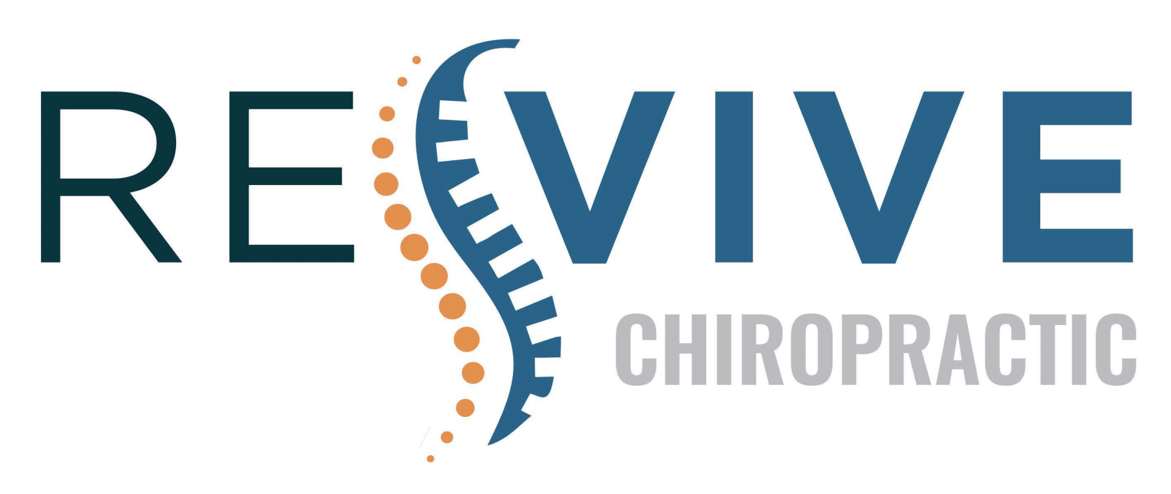You've probably noticed how generic treatments for back pain often fall short, leaving you frustrated and searching for answers. Personalization might be the key to transforming your experience, as it considers your unique body mechanics and pain triggers. By focusing on what truly works for you, tailored strategies could lead to more effective pain management and recovery. But what factors should you consider when seeking a personalized approach, and how can these adjustments change your journey? The implications are significant, and exploring them could redefine your path to relief.
Understanding Back Pain
How well do you really understand back pain? It's more than just a common complaint; it's a complex issue influenced by various factors. When you experience back pain, it can stem from muscle strain, poor posture, or even emotional stress. Recognizing the specific cause is vital for effective management.
You might think of back pain as a single condition, but it's actually a collection of symptoms that can differ greatly from person to person. Some people feel a sharp, shooting pain, while others experience a dull ache. Understanding your pain's nature can help you communicate better with healthcare professionals and tailor your treatment approach.
Your daily habits play a considerable role in the development of back pain. If you spend long hours sitting at a desk without proper support, or if you lift heavy objects incorrectly, you're more likely to strain your back. It's important to evaluate your lifestyle and make necessary adjustments.
Incorporating regular physical activity, stretching, and strength training can strengthen your back and prevent pain.
Additionally, emotional factors such as stress or anxiety can exacerbate your discomfort. Being aware of this connection can help you address not just the physical symptoms but also the emotional components of your pain.
Ultimately, the more you comprehend your back pain and its triggers, the better equipped you'll be to manage it effectively. Understanding your pain is the first step toward reclaiming your life and enhancing your overall well-being.
The Limitations of Generic Treatments
Recognizing the limitations of generic treatments is essential for effectively addressing back pain. Many people rely on one-size-fits-all solutions, but these often miss the mark. Here are some key limitations you should be aware of:
- Lack of Individualization: Generic treatments don't consider your unique body mechanics, lifestyle, and specific pain triggers. What works for someone else may not be effective for you.
- Temporary Relief: Over-the-counter pain relievers or generic physical therapy might provide temporary relief, but they often fail to address the root causes of your pain, which can lead to recurring issues.
- Side Effects: Many generic medications come with a list of potential side effects. You may find that managing these side effects becomes a burden, complicating your path to recovery.
- Inadequate Support: Generic approaches often lack the personalized support you need for effective healing. Without tailored guidance, you might struggle to stick with a treatment plan that truly meets your needs.
Benefits of Personalized Approaches
Personalized approaches to back pain treatment offer significant advantages over generic solutions. When you tailor a plan specifically to your unique needs, you're more likely to find effective relief. Everybody's experience with back pain is different; what works for one person mightn't work for another. By focusing on your individual symptoms, lifestyle, and preferences, a personalized approach helps identify targeted strategies that resonate with you.
One of the key benefits is improved efficacy. Personalized treatments often incorporate a mix of therapies, such as physical exercises, manual therapy, and even cognitive-behavioral techniques, which are adjusted based on your feedback and progress. This adaptability means you're not stuck with a one-size-fits-all approach that may leave you feeling frustrated.
Moreover, personalization fosters a stronger therapeutic relationship. When healthcare providers take the time to understand your specific challenges, you're more likely to feel heard and valued. This connection can boost your motivation to adhere to the treatment plan, leading to better outcomes.
Additionally, personalized approaches often encourage you to take an active role in your recovery. By engaging in discussions about what strategies you believe will work best for you, you gain a sense of ownership over your treatment. This empowerment can enhance your commitment to making lifestyle changes that promote long-term relief.
Factors Influencing Individual Pain
When it comes to your back pain, several factors play a vital role in how you experience it.
Your genetic makeup, lifestyle choices, and psychological state can all influence your pain levels.
Understanding these elements can help you better manage and transform your back pain.
Genetic Dispositions to Pain
Genetic factors play an essential role in how you experience and respond to pain, including back pain. Your genetic makeup can influence your pain sensitivity, the likelihood of developing chronic pain, and even how effectively you respond to treatments.
Understanding these genetic predispositions can be a key step in managing your pain effectively.
Here are four genetic factors that might affect your pain experience:
- Pain Sensitivity: Some individuals are genetically predisposed to have a lower pain threshold, meaning they may perceive pain more intensely.
- Inflammatory Response: Variations in genes that regulate inflammation could affect your body's response to injured tissues, influencing how quickly you heal and how much pain you feel.
- Endorphin Production: Genetic differences in endorphin receptors can impact how well your body manages pain naturally.
- Chronic Pain Conditions: Certain genetic markers may increase your susceptibility to specific chronic pain conditions, making you more vulnerable over time.
Lifestyle and Activity Levels
Your lifestyle and activity levels greatly influence how you experience back pain. When you lead a sedentary life, your muscles can weaken, making your back more susceptible to pain. On the other hand, regular physical activity strengthens your core muscles, providing better support for your spine. If you're constantly lifting heavy objects without proper technique, you're likely to strain your back, leading to discomfort.
Moreover, your daily routines can play a significant role in how you manage pain. For instance, if you spend long hours sitting at a desk, poor posture can exacerbate your back issues. Incorporating short breaks to stretch or walk can relieve tension and improve your overall well-being.
Additionally, activities like yoga or swimming can enhance flexibility and reduce stiffness.
Nutrition also comes into play; maintaining a healthy diet helps manage your weight, which can ease the pressure on your spine. If you're mindful of your lifestyle choices and activity levels, you can take proactive steps toward alleviating back pain.
Ultimately, tailoring your daily habits to support your back health can lead to significant improvements in how you feel and function.
Psychological Factors at Play
Many people don't realize that psychological factors can greatly influence how back pain is perceived and managed. Your thoughts, emotions, and beliefs about pain can shape your experience and even affect recovery. Understanding these factors is essential for personalizing your approach to managing back pain.
Here are four key psychological factors that can influence your pain experience:
- Fear-Avoidance Beliefs: If you fear that movement will worsen your pain, you might avoid activities, which can lead to more discomfort and disability.
- Stress and Anxiety: High stress levels can heighten your sensitivity to pain. Managing stress through mindfulness or relaxation techniques can make a difference.
- Depression: Feelings of helplessness or hopelessness can amplify your pain perception. Seeking support or therapy can help improve your mental state and, consequently, your pain experience.
- Coping Strategies: Your approach to dealing with pain—whether you confront it or avoid it—can greatly impact your pain levels. Developing effective coping mechanisms can enhance your resilience against pain.
Strategies for Personalization
When it comes to managing back pain, personalization is key.
You need tailored exercise programs and individualized treatment plans that fit your unique situation.
This approach not only enhances your recovery but also empowers you to take control of your health.
Tailored Exercise Programs
Creating a tailored exercise program can greatly enhance your journey toward alleviating back pain. A personalized approach allows you to focus on exercises that suit your specific needs, helping you build strength and flexibility while minimizing discomfort.
Here are four strategies to take into account when developing your program:
- Assess Your Condition: Start by understanding the root cause of your back pain. Consult a healthcare professional who can guide you on which movements are safe and effective for your situation.
- Set Realistic Goals: Establish achievable fitness goals based on your current abilities. Whether it's improving flexibility or increasing core strength, having clear objectives keeps you motivated.
- Choose Appropriate Exercises: Incorporate a mix of low-impact activities like swimming, walking, and yoga. These exercises can strengthen your back without putting too much strain on it.
- Monitor Progress: Keep track of your improvements and adjust your program as needed. Regularly reassessing your routine ensures you're on the right path and helps prevent setbacks.
Individualized Treatment Plans
Individualized treatment plans are essential for effectively addressing back pain, as they cater to your unique circumstances and needs. Instead of a one-size-fits-all approach, these plans consider factors like your medical history, lifestyle, and specific pain triggers.
When creating your treatment plan, a healthcare professional will evaluate your condition thoroughly. This may include physical examinations, imaging tests, and discussions about your daily activities. With this information, they'll design a plan that may incorporate physical therapy, medications, or alternative therapies like acupuncture and chiropractic care.
You'll also want to actively participate in your treatment. Set realistic goals, track your progress, and communicate openly with your healthcare provider about what's working and what isn't. Adjustments may be necessary along the way, so don't hesitate to advocate for changes that better suit you.
Additionally, consider incorporating self-management strategies such as mindfulness, stress reduction, and ergonomic adjustments at work or home.
All these elements combined create a thorough, personalized approach that empowers you to manage your back pain effectively and improve your overall quality of life.
Success Stories and Case Studies
Success stories and case studies highlight the transformative power of effective back pain management strategies. When you explore these real-life examples, you'll see how personalized approaches can lead to remarkable improvements in quality of life.
Here are some inspiring stories that showcase the impact of tailored treatment plans:
- Emily's Journey: After struggling with chronic lower back pain for years, Emily discovered that her pain stemmed from poor posture. By working with a physical therapist, she learned corrective exercises and made ergonomic adjustments at work. Within months, she was pain-free and enjoying her favorite activities again.
- Mark's Transformation: Mark faced debilitating pain due to a herniated disc. Instead of opting for surgery, he committed to a personalized rehabilitation program that included strength training and lifestyle changes. Gradually, he regained his mobility and returned to playing basketball with friends.
- Sarah's Success: Sarah had tried various treatments without success until she found a specialized clinic. They implemented a holistic approach, incorporating acupuncture and mindfulness practices. Over time, her anxiety around pain decreased, and she regained control over her life.
- David's Resilience: After an accident left him with persistent back pain, David embraced a multi-faceted treatment plan. By combining chiropractic care with yoga, he not only alleviated his pain but also enhanced his overall well-being.
These success stories illustrate that with the right personalized strategies, you can overcome back pain and reclaim your life.
Conclusion
In your journey to overcome back pain, embracing a personalized approach can make all the difference. By considering your unique body mechanics, lifestyle, and pain triggers, you can find strategies that truly resonate with you. Generic treatments may provide temporary relief, but tailored plans empower you to take control of your pain and improve your overall well-being. Remember, you're not alone in this—many have successfully transformed their experiences, and so can you.



